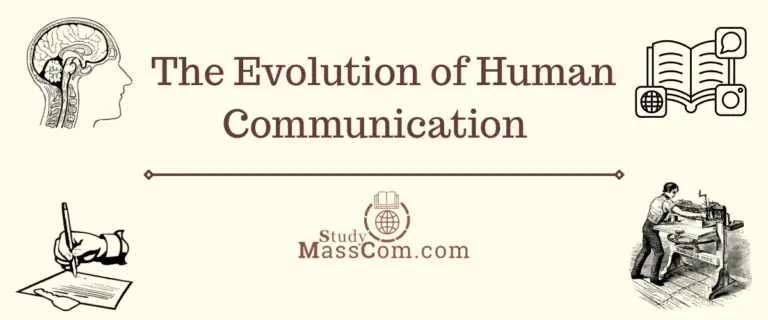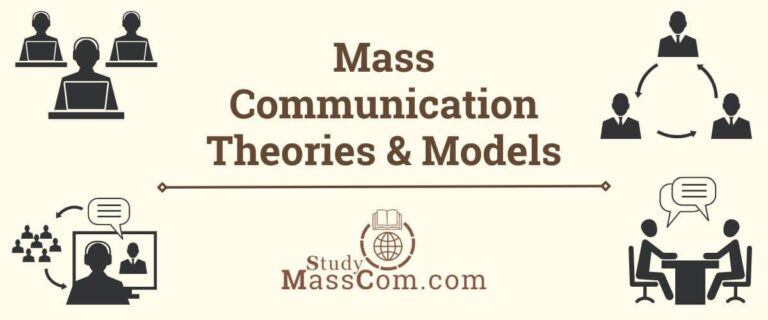Exploring Different Approaches to Development Communication
Introduction
Development communication plays a vital role in bringing about social, economic, and political change in communities and societies around the world. It encompasses a wide range of strategies and approaches aimed at facilitating development processes and addressing complex issues. In this article, we will delve into the various approaches to development communication and explore their significance in fostering positive transformations.

Definition of Development Communication
Development communication refers to the use of communication strategies, tools, and techniques to facilitate social, economic, and political development within societies. It is a multidisciplinary field that combines elements of communication, sociology, anthropology, psychology, and development studies. Development communication aims to address complex social issues, promote positive change, and empower individuals and communities to participate in the development process.
At its core, development communication recognizes that communication is not just a means of transmitting information but also a powerful tool for social transformation. It emphasizes the importance of dialogue, participation, and understanding local contexts in order to effectively address development challenges. Development communication can be applied at various levels, from grassroots community initiatives to national and international development programs.
Key Elements of Development Communication
Participation
Development communication places a strong emphasis on the active participation and involvement of individuals and communities in decision-making processes. It seeks to empower marginalized groups and ensure that their voices are heard and taken into account.
Contextual Understanding
Effective development communication requires a deep understanding of the local cultural, social, and economic contexts in which development interventions take place. It recognizes the importance of local knowledge, beliefs, and practices in shaping development outcomes.
Two-Way Communication
Development communication emphasizes the importance of dialogue and feedback. It goes beyond one-way communication by encouraging open and interactive exchanges between different stakeholders, fostering mutual understanding and collaboration.
Strategic Communication
Development communication utilizes various communication channels, such as traditional media, social media, community-based platforms, and interpersonal communication, to reach diverse audiences. It employs strategic messaging and tailored approaches to effectively convey information and influence attitudes and behaviors.
Collaboration and Partnerships
Development communication often involves collaboration between various actors, including government agencies, non-governmental organizations, community-based organizations, media outlets, and international development agencies. These partnerships enhance the reach and impact of development communication initiatives.
Applications of Development Communication
Development communication can be applied to a wide range of development issues, including but not limited to:
- Health promotion and disease prevention
- Education and literacy programs
- Poverty alleviation and economic empowerment
- Environmental conservation and sustainability
- Gender equality and women empowerment
- Agricultural development and rural livelihoods
- Human rights advocacy and social justice
By employing strategic communication approaches, development communication seeks to create awareness, change attitudes and behaviors, mobilize resources, and facilitate the implementation of sustainable development initiatives.
Different Approaches to Development Communication
Participatory Communication
Participatory communication emphasizes the active involvement and participation of individuals and communities in the development process. It recognizes that development is a collaborative effort that should incorporate the perspectives and needs of the people it aims to benefit. This approach involves inclusive dialogue, community engagement, and the promotion of local knowledge and expertise. By empowering communities to express their opinions and participate in decision-making, participatory communication fosters ownership and sustainable development.
You can also learn about the Magic Multiplier approach to development communication introduced by Wilbur Schramm.
Advocacy and Awareness Campaigns
Advocacy and awareness campaigns are essential approaches in development communication that aim to raise public awareness about specific social issues, policies, or programs. These campaigns utilize various media channels, including traditional media, social media, and community-based platforms, to inform and mobilize individuals and communities. The objective is to create a sense of urgency and inspire action, whether it be to promote education, healthcare, environmental conservation, or social justice.
Behavior Change Communication
Behavior change communication focuses on promoting positive behavioral changes within communities. It involves designing and implementing communication strategies to encourage individuals to adopt healthier, safer, and more sustainable practices. This approach recognizes that knowledge alone is often insufficient to induce behavioral change. Effective behavior change communication incorporates persuasive techniques, social norms, and interactive platforms to encourage individuals to adopt desired behaviors, such as adopting hygienic practices, using contraception, or promoting gender equality.
Media for Development
Media plays a crucial role in shaping public opinion and facilitating development efforts. Media for development approach harnesses the power of mass media, including television, radio, print media, and digital platforms, to disseminate information, facilitate dialogue, and promote social change. It involves creating compelling content that educates, inspires, and mobilizes audiences. Media for development can include documentaries, radio dramas, public service announcements, and online platforms for information sharing and community engagement.
Capacity Building and Skill Development
Capacity building and skill development are vital components of development communication. This approach focuses on enhancing the communication skills and knowledge of individuals and communities. It involves providing training, workshops, and resources to empower individuals to communicate effectively, express their needs, and actively participate in development processes. Capacity building in communication equips communities with the tools they need to articulate their concerns, engage with policymakers, and advocate for change.
Examples of Different Approaches to Development Communication
Here are a few examples of approaches commonly used in development communication:
Participatory Video
A participatory video is an approach that involves equipping individuals or communities with video production skills to create their own videos. It allows people to express their perspectives, share their stories, and document their experiences. This approach fosters empowerment, ownership, and active participation in the development process.
Community Radio
Community radio stations provide localized content and serve as platforms for community members to voice their concerns, share information, and engage in dialogue. They play a crucial role in reaching marginalized populations and facilitating community-led initiatives. Community radio stations often collaborate with local organizations and promote local culture, traditions, and languages.
Mobile Technology
Mobile technology has become a powerful tool in development communication. Mobile phones, text messaging, and mobile applications can be used to disseminate information, provide educational content, deliver health messages, and promote behavior change. Mobile technology has proven particularly effective in reaching remote and underserved communities.
Social Media Campaigns
Social media platforms offer vast opportunities for development communication. Organizations and individuals can leverage social media to raise awareness about development issues, mobilize support, and facilitate dialogue. Campaigns can utilize hashtags, multimedia content, storytelling, and interactive features to engage audiences and spark conversations.
Participatory Theater
Participatory theater, also known as forum theater, involves interactive performances where community members actively participate in addressing social issues. It provides a platform for dialogue, problem-solving, and exploring potential solutions. Participants can act out scenarios and propose alternative actions, promoting critical thinking and community engagement.
Knowledge-Sharing Platforms
Online platforms and networks dedicated to knowledge sharing enable individuals and organizations to exchange information, best practices, and lessons learned. These platforms can range from online forums and communities of practice to digital libraries and webinars. They facilitate collaboration, capacity building, and the sharing of expertise across geographical boundaries.
Comic Books and Graphic Novels
Comic books and graphic novels are effective tools for development communication, particularly in promoting literacy, education, and behavior change. They use visual storytelling to engage audiences, simplify complex concepts, and convey important messages. Comic books can address a wide range of topics, including health, agriculture, gender, and environmental issues.
Conclusion
Development communication employs a range of approaches to facilitate positive change and improve the lives of individuals and communities. Whether through participatory communication, advocacy and awareness campaigns, behavior change communication, media for development, or capacity building, these approaches empower individuals, amplify voices, and create opportunities for meaningful engagement. By leveraging the power of communication, we can foster inclusive development processes that address social inequalities, promote sustainable practices, and build resilient communities.
FAQs
The local approach to development communication emphasizes the participation and engagement of local communities in the communication process. It recognizes the importance of understanding and addressing the specific needs, cultural context, and communication practices of the local community in development initiatives.
The local approach to development communication focuses on empowering communities to be active participants in the development process rather than passive recipients of information. It seeks to foster two-way communication channels that allow for dialogue, collaboration, and the exchange of ideas between community members, development practitioners, and policymakers.
Key principles of the local approach to development communication include:
1. Participation: Local communities are involved in decision-making processes and have a say in the development initiatives that affect them. Their input and feedback are actively sought and valued.
2. Contextualization: Communication strategies and messages are adapted to the local cultural, social, and linguistic context. This ensures that the information is relevant, relatable, and easily understood by the community members.
3. Capacity building: The local approach aims to strengthen the communication skills and capacities of community members, enabling them to effectively participate in discussions, share their perspectives, and express their needs.
4. Ownership and sustainability: Local communities are encouraged to take ownership of development initiatives and become active agents of change. They are empowered to sustain and expand the benefits of the initiatives even after external support diminishes.
5. Multiple channels and media: The local approach utilizes a range of communication channels and media, including traditional and digital platforms, to reach different segments of the community. This ensures that information is accessible to all, taking into account literacy levels, language preferences, and technological infrastructure.
6. Feedback and evaluation: Continuous feedback and evaluation mechanisms are established to assess the effectiveness of communication strategies, gather insights from the community, and make necessary adjustments to ensure improved outcomes.
The local approach to development communication recognizes that successful development initiatives require the active involvement, understanding, and support of the local community. By embracing their perspectives, knowledge, and communication practices, it aims to foster sustainable development that is rooted in the needs and aspirations of the people it seeks to serve.
Development communication has several key characteristics that distinguish it from other forms of communication. These characteristics include:
1. Two-way communication: Development communication emphasizes the importance of dialogue and interaction between different stakeholders, including development practitioners, policymakers, and the communities affected by development initiatives. It seeks to facilitate a two-way flow of information, where feedback, ideas, and concerns from the community are actively sought and considered.
2. Participatory approach: Development communication promotes the participation and engagement of local communities in the development process. It recognizes that individuals and communities have valuable knowledge and perspectives that should be incorporated into decision-making and planning.
3. Contextualization: Development communication takes into account the cultural, social, economic, and political context in which development initiatives are implemented. It recognizes that effective communication requires tailoring messages and strategies to the specific context of the target audience to ensure relevance and understanding.
4. Empowerment: Development communication aims to empower individuals and communities by providing them with information, resources, and skills necessary to participate in development processes. It seeks to enhance their capacity to make informed decisions and take ownership of their own development.
5. Social change and behavior change: Development communication aims to bring about social change by influencing attitudes, beliefs, and behaviors. It seeks to promote positive change by addressing issues such as poverty, inequality, health, education, and environmental sustainability through communication interventions.
6. Multi-channel communication: Development communication utilizes a variety of communication channels and media to reach different target audiences. This may include traditional media such as radio, television, and print, as well as new media platforms like social media, mobile phones, and the internet.
7. Evaluation and feedback: Development communication employs monitoring and evaluation mechanisms to assess the impact and effectiveness of communication interventions. It involves collecting feedback from the target audience to gauge the relevance and success of the communication strategies employed.
8. Long-term perspective: Development communication takes a long-term view of development processes. It recognizes that sustainable development requires ongoing communication efforts, as well as continuous learning and adaptation based on the changing needs and dynamics of the community.
In the context of development communication, the term “development” refers to the intentional and planned efforts to bring about positive social, economic, and environmental change in a society or community. Development involves various activities, policies, and interventions aimed at improving people’s quality of life, addressing social issues, reducing poverty, promoting equality, enhancing education and healthcare, protecting the environment, and achieving sustainable progress.
Development communication plays a crucial role in facilitating and supporting these development initiatives. It encompasses the strategic use of communication processes, tools, and techniques to inform, engage, and empower individuals and communities in the development process. It involves the exchange of information, ideas, and knowledge to foster understanding, collaboration, and participation among different stakeholders.
Development communication is not limited to the dissemination of information or persuasive messaging. It goes beyond one-way communication to create spaces for dialogue, consultation, and active engagement of community members. It recognizes that development is a complex and multifaceted process that requires the involvement and input of the people it seeks to benefit.
Development communication aims to:
1. Raise awareness: It seeks to inform individuals and communities about development issues, challenges, and opportunities. This includes providing information about available resources, services, and development programs.
2. Facilitate participation: Development communication encourages active participation and engagement of individuals and communities in decision-making processes. It fosters dialogue, consultation, and collaboration to ensure that the voices and perspectives of the affected communities are heard and considered.
3. Promote behavioral change: Development communication endeavors to influence attitudes, beliefs, and behaviors to support positive social change. It may involve promoting health and hygiene practices, encouraging sustainable agricultural methods, advocating for gender equality, or raising awareness about environmental conservation.
4. Build capacity: Development communication focuses on strengthening the communication skills and capacities of individuals and communities. It empowers them to effectively participate in development initiatives, articulate their needs and aspirations, and take ownership of their own development.
5. Foster social cohesion: Development communication aims to foster social cohesion by promoting dialogue, understanding, and empathy among different groups in society. It helps bridge gaps in communication and build trust and collaboration between stakeholders.







Great contribution to knowledge. I learned a lot from this piece. Thank you.
Indepth